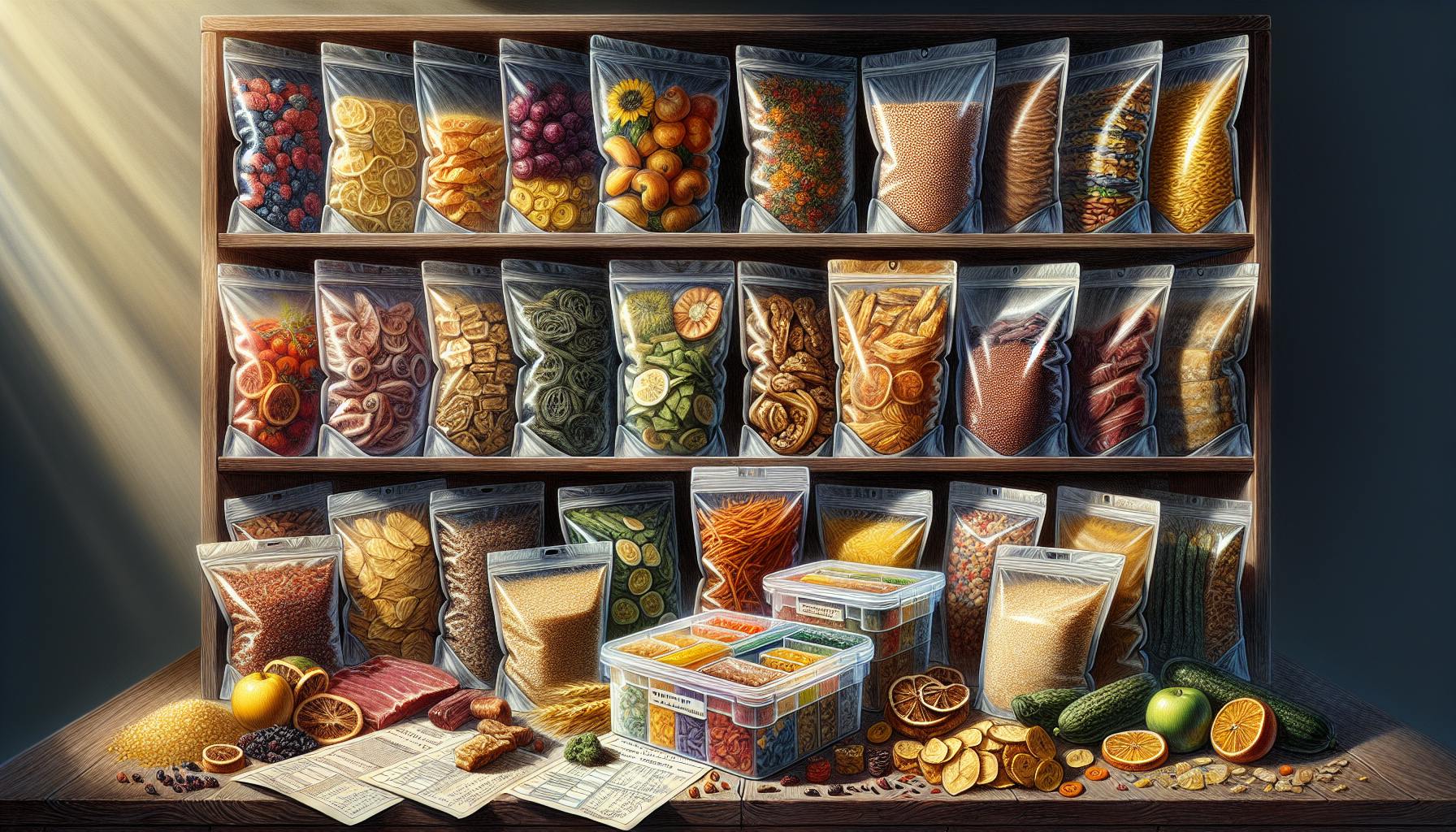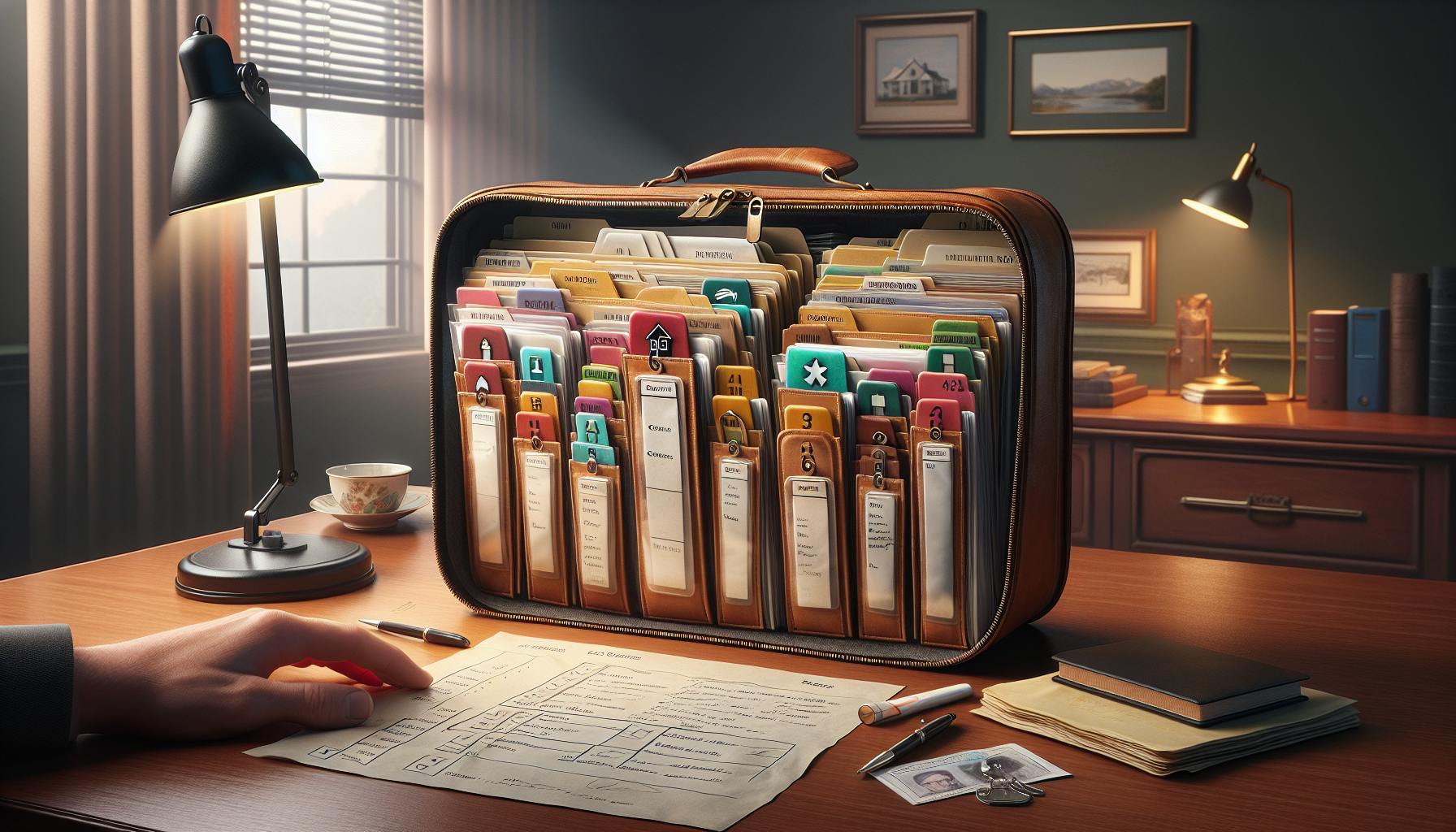When emergencies strike, having a well-stocked go bag can make all the difference in keeping yourself and your family safe and secure.
In this roundup, we'll explore the ultimate essentials to include in your go bag backpack, from selecting the best bug out bag to packing the perfect survival supplies.
You'll discover the ideal backpack features, must-have gear for navigation and first aid, clothing and shelter solutions, tools and utilities, as well as tips for maintaining your kit so it's always emergency-ready.
Preparing Your Ultimate Go Bag Backpack
A go bag backpack, also known as a bug out bag or ultimate survival kit, is crucial for emergency preparedness. When packing your go bag, focus on the essentials to ensure you have what you need if disaster strikes.
Water and Food
Having access to clean water and non-perishable food is vital in an emergency situation. Pack at least 1 gallon of water per person for a 72 hour period. Include high calorie, lightweight foods like protein bars, nuts, and dried fruits and meats.
First Aid Supplies
A well-stocked first aid kit can help treat injuries and illness when professional medical care is unavailable. Be sure to include bandages, gauze, medications, sanitation supplies, etc.
Tools and Gear
Pack tools like flashlights, batteries, a pocket knife, duct tape, and fire starters. Also include warm clothing, sturdy shoes, sleeping bags, and a tent or tarp shelter.
Communication Devices
Stay connected with a battery powered or hand crank AM/FM radio plus a cell phone with an external battery pack. Also pack whistles, signal mirrors, flares, and flags to signal for help.
By packing these go bag backpack essentials and more, you’ll be well equipped to handle an emergency situation. Be sure to customize your bag to meet your family’s unique needs.
Selecting the Best Bug Out Bag 2023
To stay prepared for emergencies in 2023, choosing the best bug out bag requires considering durability, comfort, and useful features. Here are some key factors to evaluate when selecting your bug out bag:
Materials and Build Quality
- Opt for durable, water-resistant fabrics like 500D nylon or cordura that can withstand the elements
- Look for reinforced stitching and strong zippers less likely to break or jam
- Metal hardware and straps add reliability for the long haul
When assessing build quality, the best bug out bags use premium materials engineered to handle repeated use in tough situations.
Storage Capacity and Modular Design
- Prioritize bags with ample space and compartments to organize your gear
- Modular and detachable components allow custom packing configurations
- MOLLE webbing offers attachment points to expand capacity
Evaluate your packing needs to determine ideal storage volume. Modular designs provide versatility to scale up or down depending on the situation.
Comfort and Portability
- Padded shoulder straps prevent fatigue from bearing heavy loads
- Sternum and hip straps distribute weight and stabilize the bag
- Torso length adjustments cater to different body sizes
Make sure your bug out bag offers ergonomic support for extended wear. Adjustability also enables proper positioning for ease of access and mobility.
Weather Resistance and Security
- Water-resistant coatings protect contents from rain, snow, etc.
- Lockable zippers deter tampering and theft of valuables
- Durable exterior stands up to abrasions, punctures, etc.
Seeking weatherproof and secure bags reduces risk of damage to your gear while ensuring no one else can access it.
With these tips in mind, conduct thorough research to select the ideal bug out bag to meet your needs in 2023 and beyond. Prioritizing durable design, ample capacity, versatility, comfort and security leads to effective emergency preparedness.
Go Bag Backpack List: The Essentials
A well-packed go bag contains a carefully curated list of items designed for survival and self-sufficiency. Having the essentials on hand can make all the difference in an emergency situation.
Hydration and Nutrition
Water purification methods are vital for access to safe drinking water. Consider packing:
- Water purification tablets
- A portable water filter
- A metal water bottle
Pack high-calorie, non-perishable foods like protein bars, nuts, and dried fruits. These will provide the energy needed to keep going.
Comprehensive First Aid Kit
A first aid kit tailored to your personal medical needs allows you to effectively treat injuries. Be sure to include:
- Bandages, gauze, tape
- Antiseptic wipes
- Medications you require
- Tourniquet
- Splint
Reliable Navigation and Communication Tools
- Pack a battery-powered radio and emergency whistle for signaling and obtaining information.
- Have an area map, compass, GPS device, and external phone charger.
- A satellite communicator can provide texting and SOS abilities when cellular networks are down.
Power Sources and Lighting
Renewable power sources allow you to recharge devices on the go. Consider:
- Portable solar panel charger
- Manual hand crank charger
- Extra batteries
Pack multiple light sources - flashlight, glow sticks, headlamp. These provide visibility at night and can be used for signaling.
Having these essential items in your go bag means you'll have what you need no matter the situation. Choose durable, reliable gear and check your pack regularly to ensure everything is working properly.
Best Bug Out Bag Kit: Clothing and Shelter
When facing the elements, having the right clothing and shelter is critical for comfort and safety. Here are some key items to include in your bug out bag:
All-Weather Clothing Layers
- Pack breathable base layers that wick moisture from your skin. Merino wool or synthetic fabrics work best.
- Include insulating mid layers like fleece jackets and pants to retain body heat.
- Have waterproof and windproof outer layers to protect from the elements. High quality rain jackets and pants are essential.
- Choose clothing in earth tone colors for tactical concealment if needed.
- Pack extra socks, gloves, hats, and balaclavas to protect your extremities.
Shelter Solutions for Every Scenario
- Pack a lightweight, compact tent or tarp shelter. Make sure it's durable and easy to set up.
- Emergency bivvy sacks provide basic protection when setting up a tent isn't possible.
- Have a waterproof ground sheet or footprint to place under your shelter.
- Include paracord and tent stakes to securely erect shelters.
- Space blankets can be used as improvised shelter material or for signaling.
Sleep System Essentials
- Choose a warm, compact sleeping bag rated for colder temps. Synthetic or down insulation works well.
- Sleeping pads provide insulation from the cold ground. Inflatable or closed-cell foam pads both work.
- Small pillows can maximize comfort when resting or sleeping rough.
Footwear for Rugged Terrains
- Select waterproof hiking boots with ankle support and rugged traction.
- Pack lightweight camp shoes for airing out feet and crossing water.
- Include several pairs of thick hiking socks. Carry extras in case socks get wet.
- Moleskin, foot powder, and blister bandages help prevent and treat foot issues.
Having versatile layers, shelter solutions, sleep systems, and footwear ensures you can travel safely through difficult conditions and still get rest when needed. Choose durable gear that packs down small without compromising on quality or features.
sbb-itb-b932644
Tools and Utilities for the Ultimate Survival Kit
A comprehensive set of tools and utilities can empower you to handle unexpected challenges. Having versatile, multi-purpose gear in your go bag allows you to address a variety of needs, from creating fire to repairing equipment.
Multipurpose Tools and Knives
Carrying a sturdy, sharp knife and multipurpose tool in your go bag ensures you have the means to construct shelters, gather resources, prepare food, and complete repairs. Some top options include:
-
Swiss Army Knife or Leatherman multitool: These pack numerous functions like knives, screwdrivers, bottle openers, scissors, and pliers into one portable tool.
-
Fixed-blade knife: More durable than a pocket knife, fixed-blade knives hold up better for chopping, digging, splitting wood, and other heavy-duty tasks.
-
Folding saw: Useful for cutting branches and harvesting firewood. Consider one with both coarse and fine teeth.
Fire Creation and Maintenance
Being able to start and sustain a fire provides light, warmth, a means to purify water, and boosts morale. Equip your go bag with:
- Waterproof matches and lighter
- Fire starters like dryer lint, wax-infused cotton balls, or store-bought tinder
- Magnifying glass
- Kindling like cotton balls, wax, or dry grass
Also pack a metal container to transport fiery embers if needed.
Repair Kits and Miscellaneous Supplies
You never know when something will break or how a random item might prove useful. Prepare for surprises by packing:
- Duct tape
- Safety pins
- Needle and thread
- Cable ties
- Spare batteries
- Super glue
Simple repair items like these grant peace of mind and allow you to fix faulty equipment.
Signaling and Rescue Devices
Should an emergency arise, you’ll need to call for help. Smart choices for signaling rescuers include:
-
Whistle: Portable, easy to operate, and loud.
-
Signal mirror: Allows you to reflect sunlight over long distances. Can also be used for personal grooming.
-
Glow sticks: Help rescuers spot you in low-light conditions.
-
Flares: Launch high into sky to pinpoint your location.
The right mix of signaling and rescue devices can save your life. Select gear designed for durability, brightness, and ease of use during stressful situations.
Best Bug Out Bag for Family Preparedness
A well-stocked bug out bag is essential for family preparedness during emergencies. When packing for the entire family, special considerations must be made to meet everyone's needs.
Family-Specific Medical Supplies
Be sure to pack medications, first aid items, and other medical gear for each family member. Include pediatric fever reducers, bandages, antibiotic cream for children. Don't forget medications and medical devices for elderly or family members with special needs. Having these supplies on hand can be crucial during an emergency evacuation or shelter-in-place scenario.
Entertainment and Comfort Items
Bugging out with kids can be stressful for the whole family. Pack a lightweight deck of cards, Mad Libs, or other games to provide distraction. Comfort items like small stuffed animals, blankets, or family photos can also ease anxiety for children and adults alike.
Increased Food and Water Reserves
When packing food and water, calculate for the entire family's needs. The general recommendation is 1 gallon of water per person per day for at least 3 days. For food, pack high-calorie, non-perishable items like granola bars, trail mix, and peanut butter. Don't forget to account for infants - pack extra formula, baby food, and bottles.
Documentation and Identification
Be sure to have copies of important documents for the whole family, including IDs, health insurance cards, birth certificates, etc. Make copies and store in a waterproof bag or container. Having this documentation can be vital during evacuations or if family members become separated.
Packing a family bug out bag requires some additional planning, but taking these considerations into account will ensure your whole family is prepared when disaster strikes. Customizing your supplies to meet everyone's needs is well worth the effort for peace of mind.
Maintaining and Updating Your Go Bag Backpack
Regular review and rotation of your go bag's contents are crucial to ensure its readiness at all times.
Inspection and Rotation Schedule
It is recommended to inspect the contents of your go bag backpack at least every 3-6 months. Set reminders on your calendar to prompt you to thoroughly go through all items. Check expiration dates on food, water, medicine, and batteries. Replace anything that is expired, damaged, or missing.
Consider keeping a master checklist of everything that should be in the bag. Cross items off as you inspect them and make notes about replacements needed.
Seasonal Adjustments
The time of year may dictate adjustments to your go bag contents. For example, include warm clothing and blankets during winter months. In summer, pack more water and lighter clothing.
You may have seasonal regional risks to prepare for too - flash floods, blizzards, hurricanes, etc. Research risks in your area and pack accordingly.
Training and Familiarization
It's not enough to just have supplies packed. You need to know how to use everything in your bag.
Set reminders to take out your go bag and practice setting up temporary shelter, starting a fire, using tools, administering first aid - whatever your bag contains. This ensures you have the skills needed when seconds count.
Go on hiking or camping trips using only your go bag so you gain real-world experience relying on just what's in it. This tests the bag's effectiveness.
Staying Informed on Best Practices
As new technologies, products, and best practices emerge, you may need to upgrade what's in your bag.
Follow prepper blogs and YouTube channels to learn the latest recommendations. Attend prepper conventions or take survival training courses to keep enhancing your knowledge.
Keeping fully up to date ensures you get the most out of your go bag when needed.
Conclusion: The Essentials of a Well-Prepared Go Bag Backpack
A well-stocked go bag backpack is crucial for emergency preparedness. Here are some key essentials to include:
Water and Food
Having potable water and non-perishable food packed ensures you can survive for at least 72 hours if disaster strikes. Some good options are:
- Bottled water or water filtration system
- High-calorie protein bars
- Canned goods
- MREs (meals ready to eat)
First Aid Supplies
A first aid kit can help treat injuries and ailments during an emergency. Be sure to pack:
- Bandages
- Gauze
- Antibiotic ointment
- Pain medication
- Other essential medical supplies
Tools and Gear
Equipment to help with navigation, lighting, and defense is vital. Consider packing:
- Flashlight
- Multi-tool
- Map and compass
- Pepper spray
Having these basic yet critical items in a go bag means you and your family will stay safe and secure even in the worst situations. Choose durable, high-quality gear and replenish any expired or depleted supplies regularly.


